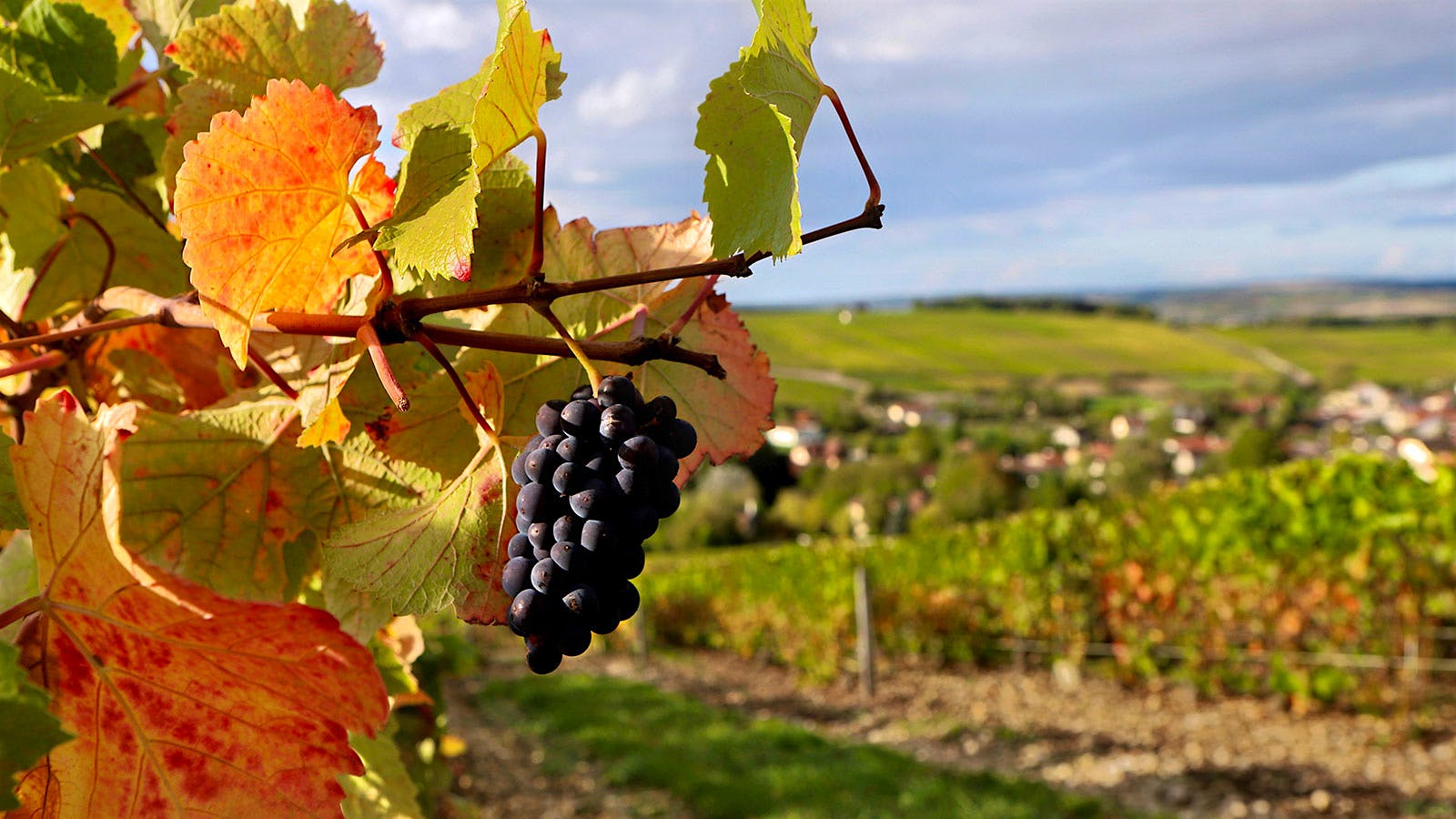Producers in France’s Champagne region concluded this year’s harvest with a big sigh of relief. The 2021 growing season was one of the region’s most challenging in decades, dogged by frost, mildew and hail. But all is not lost, leading Champagne houses and growers insist. The reduced crop that they were able to harvest still shows outstanding potential.
The Comité Interprofessionel du Vin de Champagne (CIVC), Champagne’s governing trade body, announced the official start of harvest and picking Sept. 6. At the same time, the organization released a devastating series of statistics: Frost destroyed an estimated 30 percent of Champagne’s 2021 crop in April and early May, mildew reduced the potential harvest an additional 25 to 30 percent, and hail damage struck 1,235 acres of vineyards, about 1.5 percent of the region’s total acreage, with roughly half of the crop among those 1,200-plus acres lost entirely.
“This year has been quite complicated,” said Mathilde Margaine, who works with her father, owner and winemaker for the family’s A. Margaine, based in Villers-Marmery. She noted that several nights of frost that hit vineyards throughout France in April were not as impactful to all of Champagne, because most vines had not experienced budbreak yet in the region’s northern subzones. But in the Aube subregion, the most southern portion of Champagne, the vines were already well-developed when several nights of frost between the second week of April and first week of May decimated the young buds.
“After [the frost], the nightmare really started,” said Margaine, describing hail in May and June that damaged and destroyed vines in some parts of Champagne, including two plots that Margaine owns in Trépail. Other areas were completely spared.
Next steady rains promoted the development of disease, particularly downy mildew, across the region. “We had a lot of rain and storms in spring and early summer,” said Jean-Baptiste Lécaillon, chef de caves for Louis Roederer. “[As a result, we] developed the highest downy mildew pressure in Champagne since 1958!”
The rains persisted from spring into early August, turning the ground muddy and making it hard for growers to get into the vineyards to treat the vines and counter the sometimes rampant mildew. “There were no good options this year,” said Margaine.
Going into harvest, Lécaillon credited dry, cool conditions in August as the reprieve growers needed for surviving grape bunches to continue maturation. He estimates he lost approximately 25 percent of his crop due to frost and 25 percent due to mildew but harvested larger berries with more juice due to the abundant water supply. The result? He expects a 30 percent smaller harvest in 2021 when all is counted.
“We’re down 50 percent,” reported chef de caves Frédéric Panaiotis of Ruinart Champagne. “But the good news is that harvest was very late.” Ruinart harvested from mid-September through early October, which allowed for greater homogeneity in the quality and character of the fruit—a concern going into harvest. “It could be a classic vintage,” added Panaiotis. “But the thing is, there won’t be a lot of it. We’ll have to dig into our reserve wines for the non-vintage [bottlings], and there won’t be a lot left over for the vintage [bottlings].”
Ironically, there are fewer reserve wines from the 2020 vintage than there might have been. In 2020 the CIVC set maximum yields for the region at 8,000 kilograms per hectare (or 3.57 tons per acre) in response to plummeting Champagne sales during the pandemic and to protect Champagne’s long-term economic health. It was a 20 percent drop from 2019, and in a healthy year like 2020, it meant some grapes were left on the vines or sold at a fraction of the usual rate to distillers. With a robust increase in sales in 2021, the CIVC has set 2021’s maximum yields at a more typical 10,000 kg/ha (or 4.46 tons per acre).
Given 2021’s difficult conditions, most producers were unable to reach the maximum yield. But what remains shows good potential, and Champagne’s producers have a recent string of outstanding vintages to lean on with the 2018, 2019 and 2020 harvests. Consumers will have no difficulty finding quality Champagne in the coming years.
Want to get the latest news on collectible wines and the auction market? Sign up for Wine Spectator‘s free Collecting e-mail newsletter and get a new top-rated wine review, collecting Q&As and more, delivered straight to your inbox every other week!
